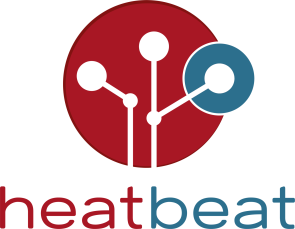AI-X Heat
Digital heat planning for Aachen: In the AI-X Heat project, experts are working on digitalized municipal heat planning. The City of Aachen, regio IT, RWTH Aachen University and heatbeat nrw are working together to achieve this.
The heat supply generates a large proportion of emissions in Germany. Heat generation is also responsible for around 40% of greenhouse gas emissions in Aachen.
In order to convert the heating to renewable energies, the municipal heating planning (KWP) is considering where the district heating network could be expanded and where alternative solutions need to be found. It also calculates what the path to a greenhouse gas-free heat supply could look like. The KWP is evaluated and revised every five years.
The challenges of the KWP are:
- Collecting the data is time-consuming and it is often available in different formats
- Progress and developments are only reviewed every five years and plans are adjusted accordingly
- Heat planning is a general, large-scale strategy and is therefore only of limited help for individual buildings or specific issues. Additional services are needed for a successful and rapid heat transition
- Opportunities of the heat transition, such as community approaches or the inclusion of local conditions, can hardly be taken into account
The AI-X Heat research project, which the City of Aachen, regio IT, heatbeat nrw GmbH and the Chair of Building and Room Air Conditioning Technology at RWTH Aachen University are working on together, is dedicated to meeting these challenges.
The aim of AI-X Heat is to create a central, continuous platform that digitizes and updates municipal heat planning on the one hand and, on the other, provides concrete support for various stakeholders such as citizens, advice centres and heat network operators in the heat transition.
The research project is funded by the BMWK.
Interested parties wanted for joint solutions
Local heating networks can be part of the solution. Here, heat is provided jointly for several buildings, for example with a heat pump, and then transported to the houses, usually via underground hot water pipes. We are looking for people who can imagine a joint heat supply for such local heating networks. Anyone interested can contact Svenja Borgmann, project manager for AI-X Heat, at waermeplanung@mail.aachen.de. It is important that the buildings in question are not located in Stawag's planned district heating expansion area. Ideally, there should already be a group of interested parties in the neighborhood, but this is not a prerequisite.
Supported by



